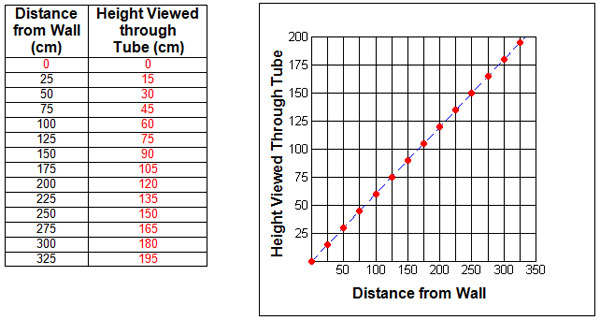
In this resource, you will learn how to write equations for situations that are modeled by direct or inverse variations. Those equations will then be used to make predictions.

![]() In this investigation, you are going to simulate looking through a paper tube.
In this investigation, you are going to simulate looking through a paper tube.
First, click here to print the Direct Variation Investigation.
The image below is a screen shot of the Tube Viewer Simulation. Click on the image to open a new window/tab and launch the applet.
After you are finished with the investigation, close the window/tab and...


Looking at the Investigation, the situation represented a direct variation. The linear function that represented the situation contained the point (0, 0). The ratio of the height viewed through the tube and the distance from the wall remained a constant throughout the situation. As the distance from the wall increased, the height viewed through the tube also increased. You can see that the equation that you wrote to model the situation was in the form y = kx.
A direct variation is a special type of linear function. In a linear function, the slope represents a constant rate of change. If you compare the slope-intercept form of the linear equation y = mx + b with the direct variation equation y = kx, you see that the constant of variation, k, is the slope of the line, m. The y-intercept, b, of the linear equation must be zero in a direct variation. In other words, a direct variation is a special linear function that goes through point (0, 0).
While shopping, Mrs. Smith decided to purchase apples for her children's lunches. The sign stated that the apples were 4 for $1.00.
This situation represents a direct variation where the cost of the apples varies directly as the number of apples purchased. The more apples that Mrs. Smith buys, the greater will be her total cost and the cost will be increasing by a constant amount. If Mrs. Smith decides not to buy apples, she will have not have a cost for apples, representing (0, 0).

The equation is c = 0.25a. Since 4 apples cost $1.00, the cost for each apple, the constant rate of change is $0.25.

Mrs. Smith would spend $2.50 to buy 10 apples. Substitute 10 into the equation for a.
c = 0.25(10) = 2.50.
